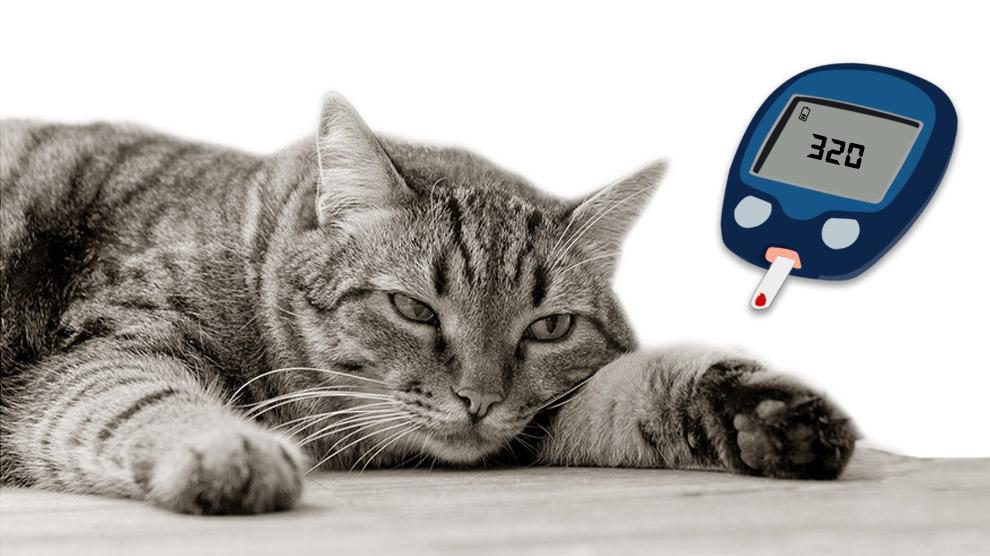Hyperglycemia in cats means the presence of higher levels of glucose than the standard level in the bloodstream of cats. The pancreas produces an important hormone called insulin which ensures the blood sugar levels are within normal range. If the insulin level falls well below normal, the glucose level rises steadily resulting in a health condition called hyperglycemia.
Cats affected with hyperglycemia
- Older and middle-aged cats are more susceptible to hyperglycemia.
- Even male neutered cats are affected by this condition
- At the time of stress, cats glucose level can touch 300 to 400 mg.
Symptoms of hyperglycemia in cats
- Tissue damage
- Wounds fail to heal on time
- Severe depression
- Nerves in the legs are affected
- Enlargement of liver
- Bloodshot eyes
- Cataract
- Dehydration
- Continuous hunger
- Obesity
- Weight loss
- Polyuria or increased urination
- Polydipsia or increased thirst
Causes of hyperglycemia in cats
- Infection in urinary tract area or teeth
- Diet problems
- Insulin hormone malfunction
- Stress
- Excitement
- Exertion
- Body problems after consuming meals
How to diagnose Hyperglycemia?
A number of tests, ranging from a urinalysis, blood count test and a chemical profile test will be done by your vet. In most cases, the result will only show high blood sugar levels. The tests are normally okay unless the cat is suffering from something serious.
The urinalysis test may indicate a solid increase in ketone bodies, bacteria, pus, sugar levels as commonly witnessed in diabetes mellitus. High blood glucose accompanied by low insulin levels also shows diabetes mellitus. Abnormal levels of amylase enzyme and lipase levels suggest pancreatic inflammation.
In specific cases, the liver produces higher quantities of the liver enzyme. Ultrasound and abdominal X-rays may reveal more detail regarding the underlying cause. A thorough examination of the cat by your vet will provide more information about the exact cause.
Treatment for Hyperglycemia
Physiological causes imply the need to eliminate stress in cats. No vet will take drastic steps to bring down blood sugar level all of a sudden because it may cause lower blood sugar percentage or hypoglycemia.
In diabetic pets, glucose level variations are normal and managing the insulin dose can reduce the problem. At all times, never treat your cat on your own without consulting a vet.
How do I handle a cat with hyperglycemia?
In this scenario, the cat owner ’s complete assurance and commitment are needed for good management of diabetes. These cats also need a balanced diet with high fibre, low-fat, low-carbohydrate, and high-protein content.
If your vet recommends insulin, you should ensure that your cat never misses even a single dosage. Proper lifestyle changes and excellent care can avoid major health issues in diabetic dogs.











